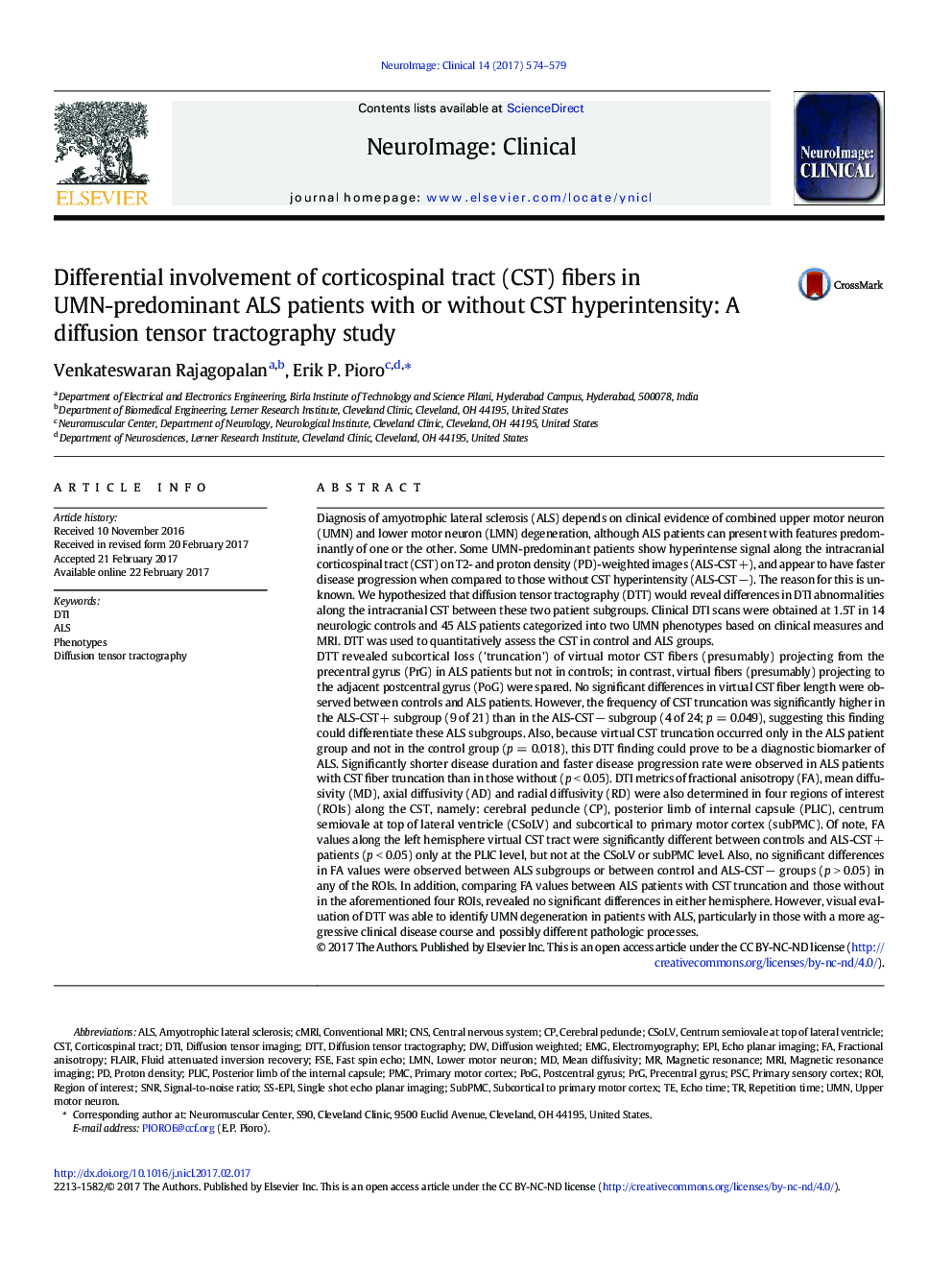| Article ID | Journal | Published Year | Pages | File Type |
|---|---|---|---|---|
| 8688752 | NeuroImage: Clinical | 2017 | 6 Pages |
Abstract
DTT revealed subcortical loss ('truncation') of virtual motor CST fibers (presumably) projecting from the precentral gyrus (PrG) in ALS patients but not in controls; in contrast, virtual fibers (presumably) projecting to the adjacent postcentral gyrus (PoG) were spared. No significant differences in virtual CST fiber length were observed between controls and ALS patients. However, the frequency of CST truncation was significantly higher in the ALS-CST + subgroup (9 of 21) than in the ALS-CST â subgroup (4 of 24; p = 0.049), suggesting this finding could differentiate these ALS subgroups. Also, because virtual CST truncation occurred only in the ALS patient group and not in the control group (p = 0.018), this DTT finding could prove to be a diagnostic biomarker of ALS. Significantly shorter disease duration and faster disease progression rate were observed in ALS patients with CST fiber truncation than in those without (p < 0.05). DTI metrics of fractional anisotropy (FA), mean diffusivity (MD), axial diffusivity (AD) and radial diffusivity (RD) were also determined in four regions of interest (ROIs) along the CST, namely: cerebral peduncle (CP), posterior limb of internal capsule (PLIC), centrum semiovale at top of lateral ventricle (CSoLV) and subcortical to primary motor cortex (subPMC). Of note, FA values along the left hemisphere virtual CST tract were significantly different between controls and ALS-CST + patients (p < 0.05) only at the PLIC level, but not at the CSoLV or subPMC level. Also, no significant differences in FA values were observed between ALS subgroups or between control and ALS-CST â groups (p > 0.05) in any of the ROIs. In addition, comparing FA values between ALS patients with CST truncation and those without in the aforementioned four ROIs, revealed no significant differences in either hemisphere. However, visual evaluation of DTT was able to identify UMN degeneration in patients with ALS, particularly in those with a more aggressive clinical disease course and possibly different pathologic processes.
Keywords
FSEDTIEPISNRcMRIPSCPMCLMNDTTUMNPrGROIConventional MRICStfast spin echoamyotrophic lateral sclerosisFLAIREMGelectromyographyMRIPosterior limb of the internal capsulefluid attenuated inversion recoveryALSDiffusion tensor tractographyproton densityMagnetic resonanceecho planar imagingdiffusion tensor imagingMagnetic resonance imagingdiffusion weightedCNScorticospinal tractecho timeRepetition timePostcentral gyruscerebral pedunclecentral nervous systemPhenotypesprimary motor cortexprimary sensory cortexmean diffusivityregion of interestfractional anisotropySignal-to-noise ratioupper motor neuronLower motor neuronPLICPoGprecentral gyrus
Related Topics
Life Sciences
Neuroscience
Biological Psychiatry
Authors
Venkateswaran Rajagopalan, Erik P. Pioro,
